October 26, 2023
Discovering Prague Castle: A Must-See Place for History Fans
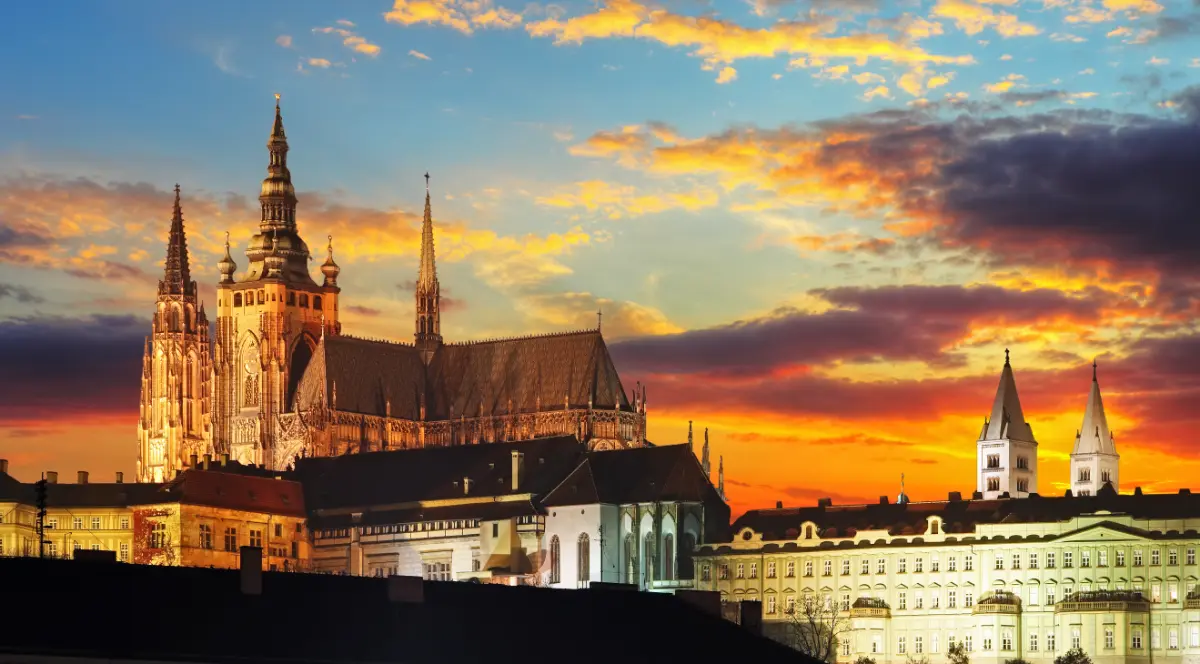
As you walk through the streets of Prague, it’s impossible to miss the towering presence of Prague Castle. This castle complex is not only the largest castle in Europe but also one of the most important cultural institutions in the Czech Republic.
With a tradition of over 1,000 years, Prague Castle is a textbook example of architecture and art history and a must-see destination for visitors worldwide.
Initially built in the 9th century, Prague Castle has served as the seat of power for kings of Bohemia, Holy Roman emperors, and presidents of Czechoslovakia.
Today, it is the official office of the President of the Czech Republic.
The castle complex is an aggregation of palaces, churches, offices, fortifications, and gardens, making it a truly unique and fascinating sight.
Whether you’re a history buff, an architecture enthusiast, or simply looking for a beautiful place to explore, Prague Castle has something for everyone.
From Medieval Times to the Velvet Revolution
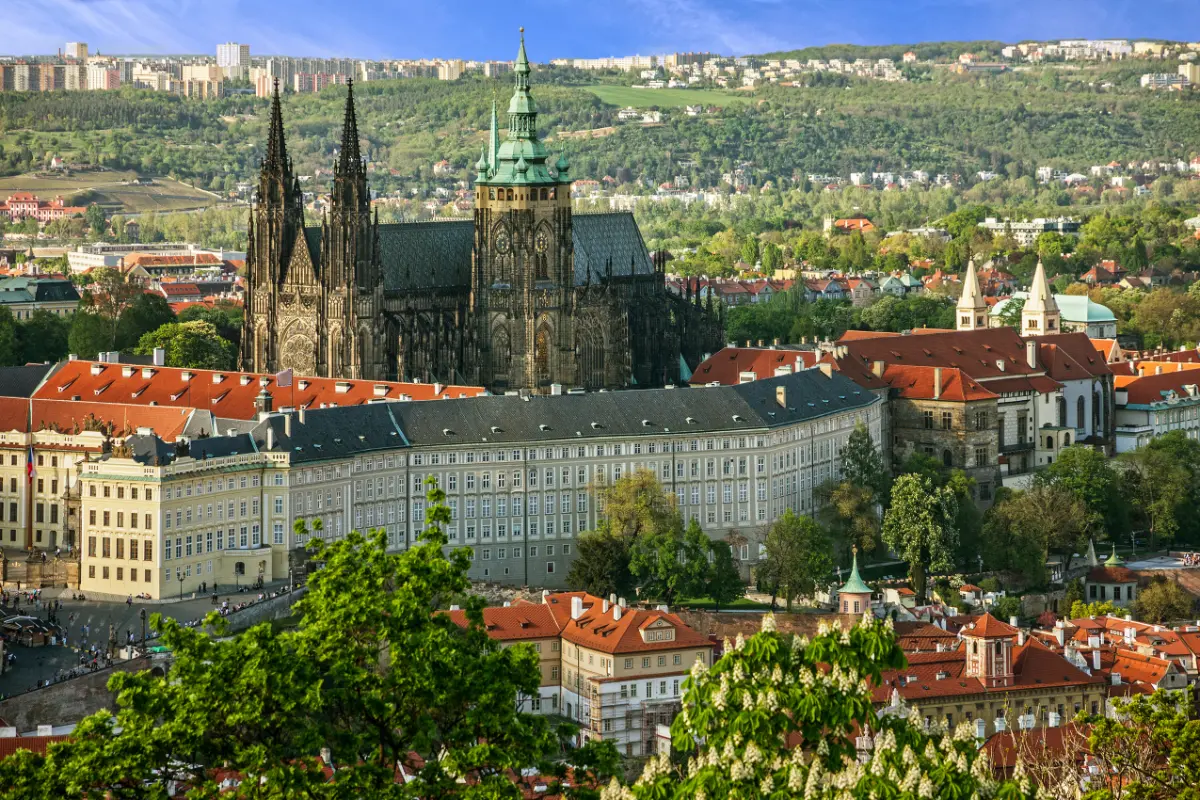
Iconic Prague Castle envelops St. Vitus Cathedral amidst verdant greenery, ©Faery / Shutterstock
Prague Castle has a rich history dates back to the 9th century when Prince Bořivoj of the Premyslid Dynasty first built it.
Over the centuries, it has served as the seat of Czech monarchs, religious leaders, Holy Roman emperors, and heads of state, including the current President of the Czech Republic.
During the reign of King Charles IV in the 14th century, major rebuilding took place, resulting in the Gothic appearance of the castle that we see today.
The castle was also the site of the infamous Defenestration of Prague in 1618, which marked the beginning of the Thirty Years’ War.
Throughout its history, Prague Castle has been closely associated with the Bohemian Crown and the Habsburgs.
Maria Theresa, the only female ruler of the Habsburg Empire, was crowned Queen of Bohemia at the castle in 1743. Later, Franz Joseph, the last emperor of Austria, used the castle as a summer residence.
In the 20th century, Prague Castle played a significant role in the Velvet Revolution, which led to the fall of communism in Czechoslovakia.
The castle was the site of mass demonstrations in 1989, and Václav Havel, a leading dissident and playwright, was later elected as the country’s first post-communist President.
Today, Prague Castle is one of Prague’s most popular tourist attractions, attracting millions of visitors every year. It is also a symbol of the historical tradition of the Czech state, linking the present with the past.
Stunning Gothic, Renaissance, and Baroque Styles
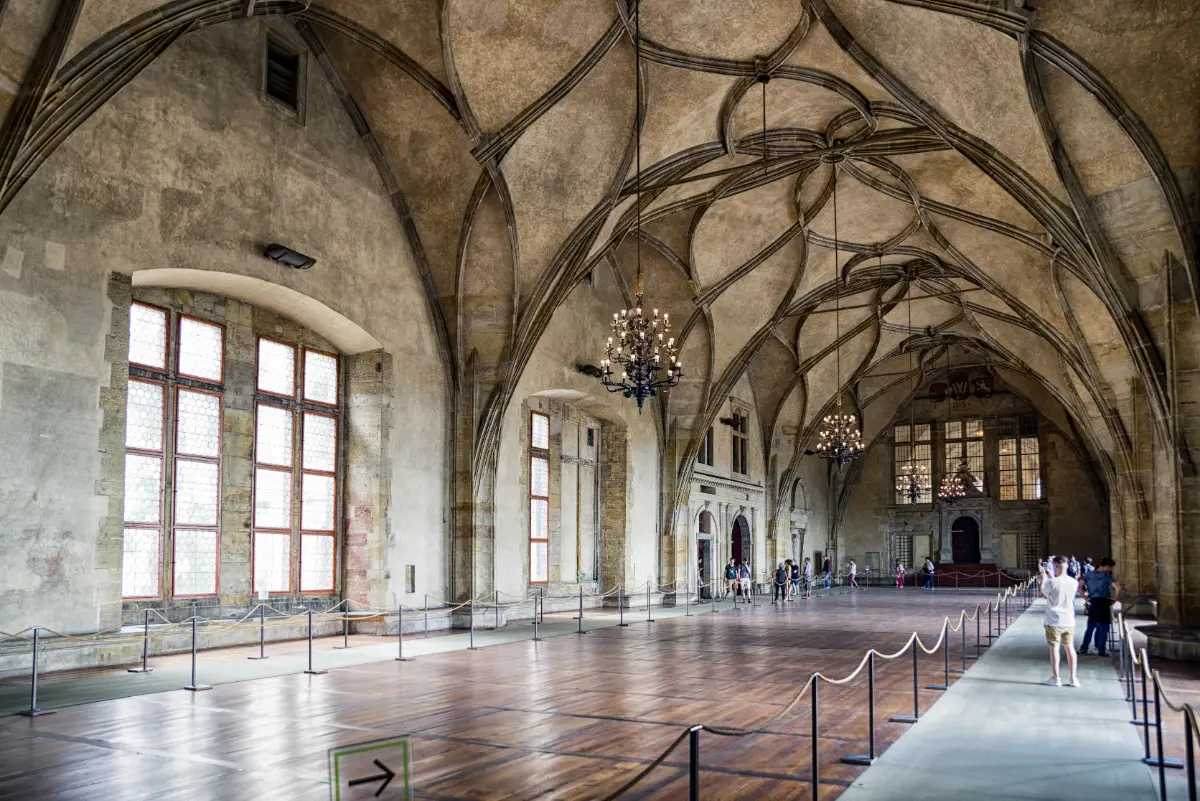
The opulent interior of Vladislav Hall within Prague Castle, ©Moravcik / Shutterstock
Prague Castle is a stunning architectural masterpiece that showcases a blend of various architectural styles. This complex comprises several palaces, fortifications, courtyards, gardens, and ecclesiastical buildings.
The castle’s architecture embodies the country’s rich history and culture. One of the most striking structures in the castle complex is the St. Vitus Cathedral. The cathedral is a Gothic architecture masterpiece with spires that soar into the sky.
The cathedral’s interior is equally impressive, with intricate stained glass windows and a grand altar. The Old Royal Palace is another unique structure within the castle complex.
The palace features a mix of Gothic and Renaissance styles and boasts grand halls such as the Vladislav Hall and the Spanish Hall. The Vladislav Hall is the largest in the palace and was used for coronations, banquets, and other royal events.
The Golden Lane is a charming street within the castle complex that features tiny houses once home to castle guards and artisans. Today, the houses have been converted into shops and museums. The houses’ architecture is a blend of Gothic and Renaissance styles.
The Lobkowicz Palace is a stunning Baroque-style palace with a museum and an art collection. The castle features grand halls, beautiful frescoes, and intricate stucco decorations.
Other notable structures within the castle complex include the New Royal Palace, the Summer Palace, the Ball Game Hall, and several Romanesque-style buildings.
A Symbol of Czech History & Tradition
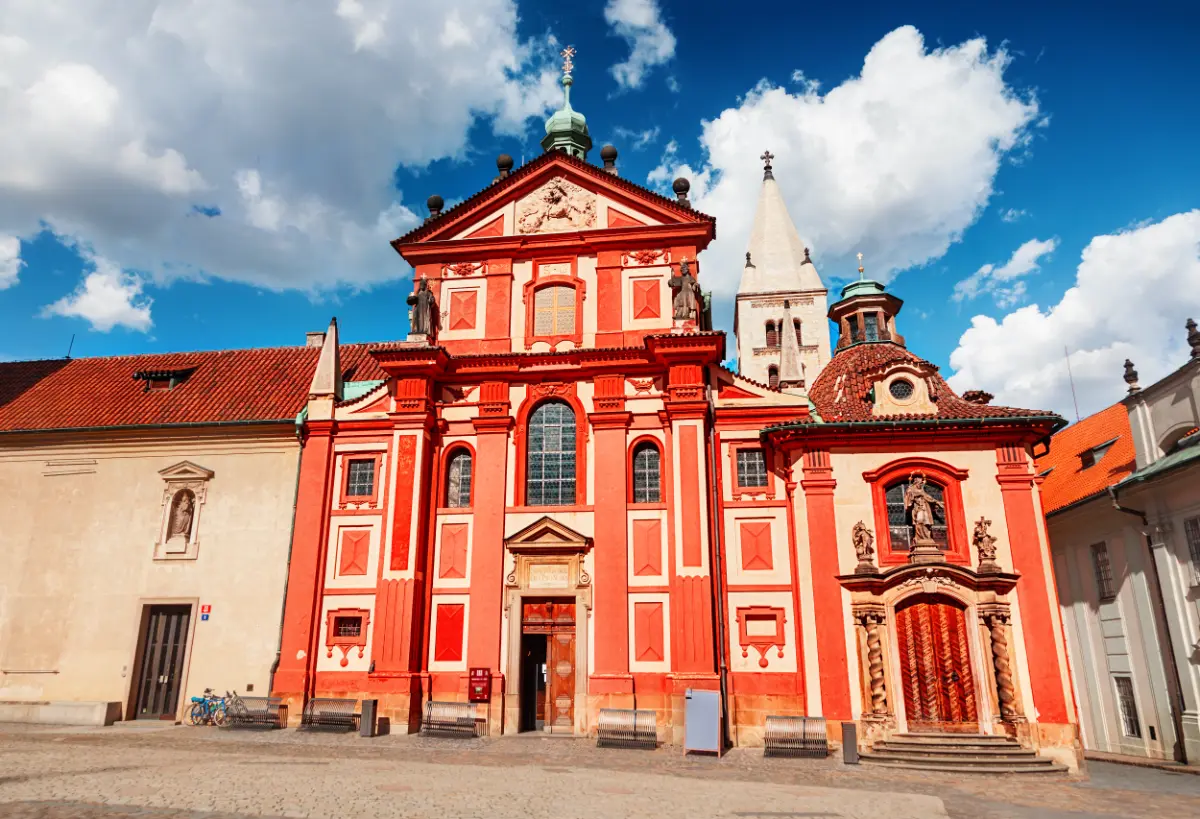
Amidst sunshine, the vibrant St. George Basilica in Prague, ©Adisa / Shutterstock
Prague Castle is an architectural masterpiece and a culturally significant landmark in the Czech Republic. The castle is a symbol of Czech history, culture, and tradition.
In 1992, Prague Castle was inscribed as a UNESCO World Heritage site, recognizing its historical and cultural significance.
The castle complex covers approximately 110 acres (45 hectares) and includes palaces, churches, offices, fortifications, courtyards, and gardens. St. George’s Basilica, located within the castle complex, is one of the oldest surviving churches in the country.
It is a fine example of Romanesque architecture and houses many valuable works of art. The Crown Jewels of the Czech Republic are also kept within the castle complex.
The jewels include the Crown of Saint Wenceslas, the scepter of the Czech kings, and the royal orb. The complex also consists of the Deer Moat, which the castle’s inhabitants once used for hunting.
Today, it is a popular tourist attraction and a peaceful oasis in the city’s heart. The Garden on the Bastion is another highlight of the castle complex.
It is a beautiful garden with stunning views of the city. Prague Castle has played an important role in Czech history and culture. It has been the site of many significant events, including the coronation of Czech kings and the signing of important treaties.
The castle has also inspired many works of art, including the writings of Franz Kafka. The Sloupová síň and Zlatá ulička are two other notable attractions within the castle complex.
Zlatá ulička, or Golden Lane, is a charming street with colorful houses that once housed alchemists and goldsmiths. In conclusion, Prague Castle is a culturally significant landmark in the Czech Republic. It is a symbol of Czech history, culture, and tradition.
Exploring Prague Castle’s Gardens and Belvedere
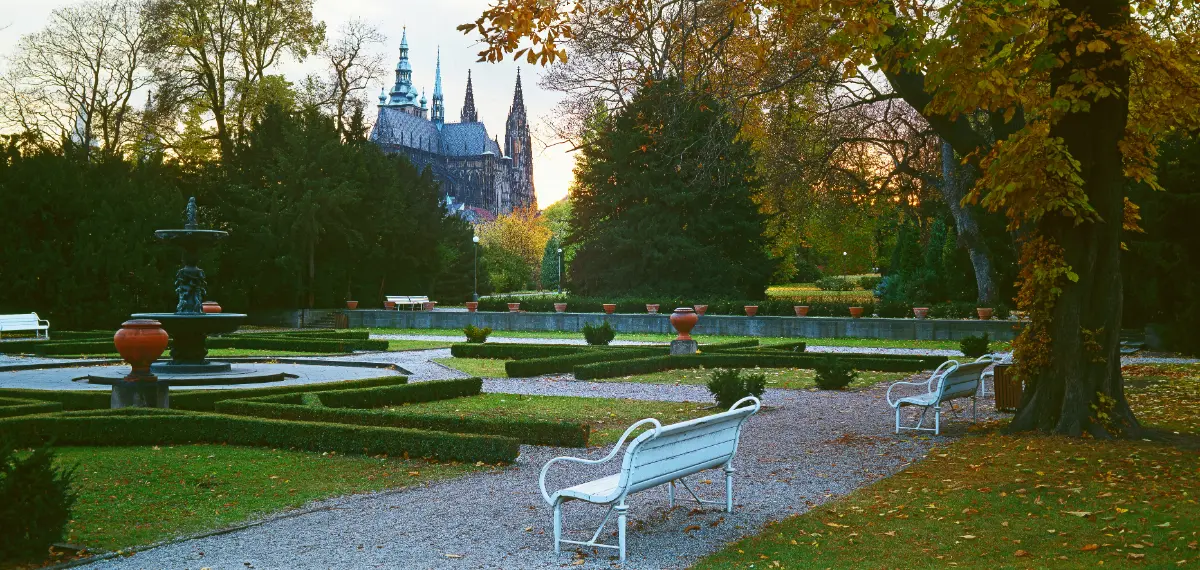
Tranquil Royal Garden at Prague Castle, ©bango / Shutterstock
To fully experience the castle, it is recommended to purchase tickets in advance to avoid long queues. You can buy tickets online or at the castle entrance.
Admission tickets grant access to the castle complex’s historic buildings, museums, and towers. The Bohemian Crown Jewels are also on display and should be noticed.
The changing of the guard is a popular attraction and takes place daily at noon. It is a fascinating display of the Czech Republic’s military tradition and is highly recommended.
Guided tours are available for those who want to learn more about the castle’s history and significance. These tours are led by experienced guides knowledgeable about the castle’s past and present.
The castle is easily accessible by public transport, and visitors are advised to allocate plenty of time to explore the complex fully.
You can also take a leisurely walk through the castle’s gardens and enjoy the stunning views of the city from the Belvedere lookout point.
In conclusion, the Prague Castle is a must-visit tourist attraction that offers a unique and memorable experience.
With its ancient castle, historic buildings, and guided tours, visitors can immerse themselves in the rich history of the Czech Republic.
Palaces, Churches, and Gardens
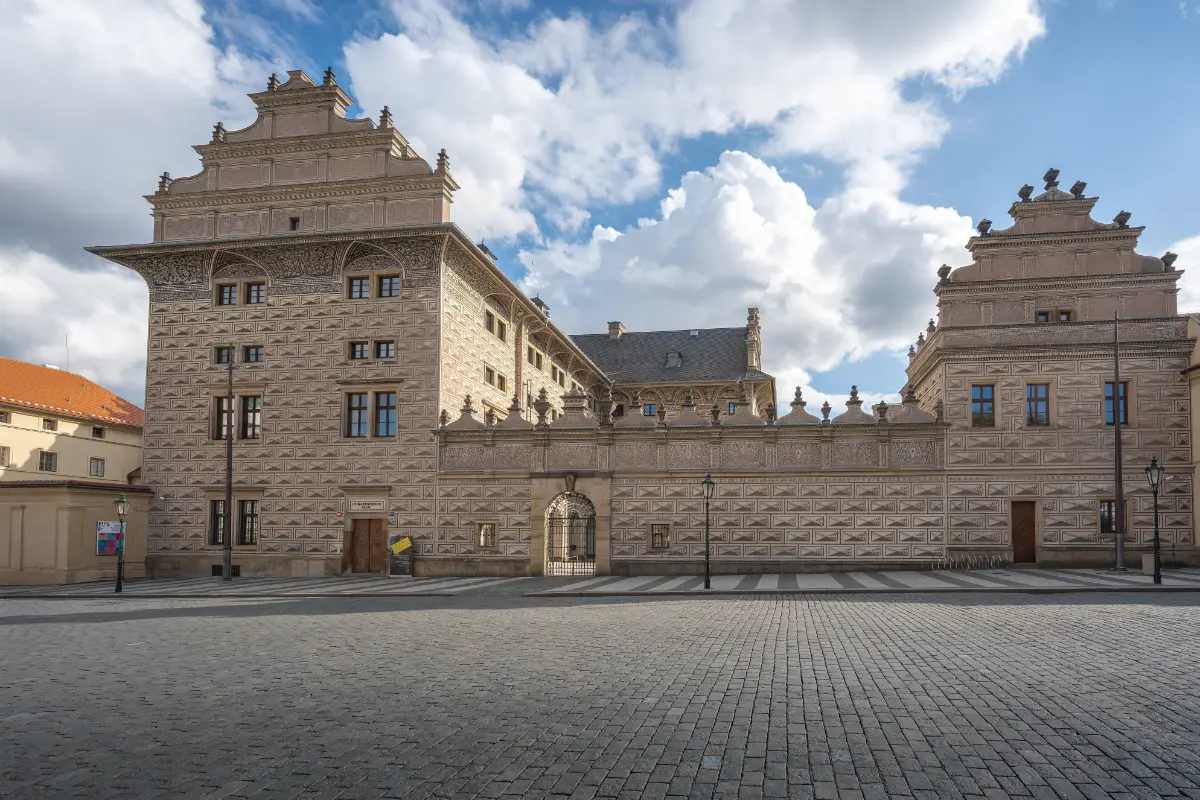
Schwarzenberg Palace, a magnificent landmark at Hradcany Square, ©Grandi/ Shutterstock
As the largest ancient castle in the world, Prague Castle is a massive complex covering an area of almost 70,000 meters.
The most famous of these are:
- Royal Garden
- Lobkowicz Palace
- Daliborka Tower
- New Royal Palace
- Garden on the Bastion
- Schwarzenberg Palace
- Rosenberg Palace
- Tower of St. Vitus Cathedral
- Paradise Garden.
The Daliborka Tower, a former prison, is now a popular tourist attraction. Visitors can climb to the top for a stunning view of the Vltava River and the city.
The Royal Garden is an oasis of peace and tranquillity, with beautiful flowers, fountains, and statues. The Lobkowicz Palace houses the most significant private art collection in the Czech Republic and is a must-see for art lovers.
The Hradčany district, where the castle is located, is an architectural wonder, with buildings dating back to the 9th century. The Benedict Ried-designed Hradčany Hill is a masterpiece of urban planning, with its winding streets and picturesque squares.
Over the years, the castle complex has undergone several renovations and reconstructions, most recently completed in 2018.
Modern Adaptations & Renovations
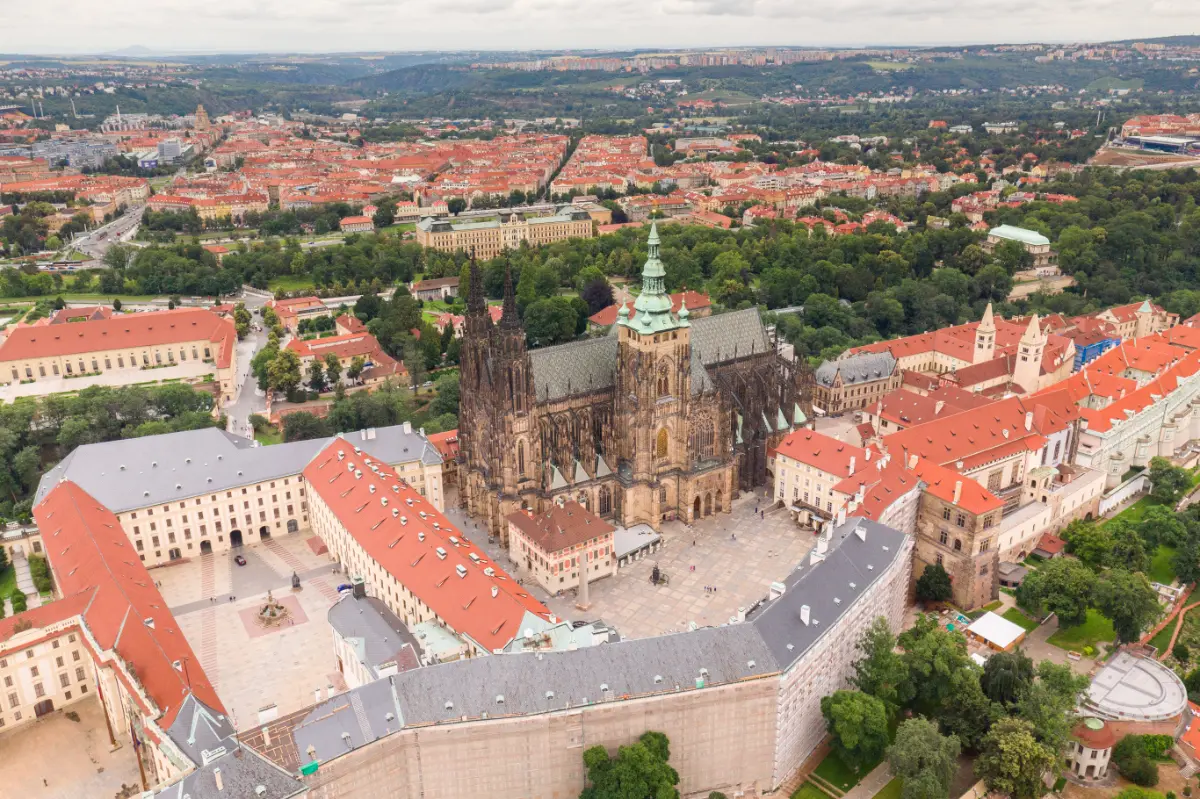
Prague Castle’s sprawling complex, ©photosounds/ Shutterstock
Over the years, Prague Castle has undergone various modern adaptations and renovations to preserve its historical and cultural significance.
One of the most significant renovations was carried out by Jože Plečnik, a Slovenian architect, between 1920 and 1934. Plečnik’s renovations aimed to restore the castle’s original appearance while incorporating modern elements.
He added new staircases, courtyards, and gardens and redesigned the castle’s interiors to make them more functional.
In 1941, Reinhard Heydrich, a high-ranking Nazi official, ordered the construction of a new wing at Prague Castle. The branch was meant to serve as his residence and office.
However, the wing was never completed after Heydrich’s assassination in 1942. After the Velvet Revolution in 1989, the castle underwent significant repairs and renovations—the repairs aimed to restore the castle’s damaged structures and preserve its historical and cultural significance.
In 1990, Václav Havel, the first president of the Czech Republic, commissioned Bořek Šípek, a Czech architect, to redesign the presidential suite at Prague Castle.
Šípek’s design was inspired by the castle’s Gothic and Baroque architecture, and he used modern materials to create a unique and functional space. The castle has recently undergone further renovations to improve accessibility for disabled visitors.
The renovations include the installation of ramps and elevators, making it easier for visitors with mobility issues to explore the castle’s many attractions.
Overall, Prague Castle’s modern adaptations and renovations have helped preserve its historical and cultural significance while making it more accessible and functional for visitors.
Prague Castle & FAQs
Where is Prague Castle located?
Prague Castle is located in the Hradčany district of Prague, Czech Republic. It is situated on a hill overlooking the Vltava River and is easily accessible by public transportation.
Are there any fees to enter Prague Castle?
Yes, there is an entrance fee to enter Prague Castle. The price varies depending on the type of ticket you purchase and the areas of the castle you wish to visit. You can buy tickets online or at the castle entrance.
What is the name of the castle in Prague?
The castle’s name in Prague is Prague Castle, also known as Pražský hrad in Czech.
What are some interesting facts about Prague Castle?
Prague Castle is the largest ancient castle in the world, according to the Guinness Book of World Records. It was founded in the late 9th century and has been the seat of power for Czech rulers for over a thousand years. The castle complex covers an area of over 70,000 square meters and includes several palaces, churches, and gardens.
How can I purchase Prague Castle tickets online?
You can purchase Prague Castle tickets online through the official website or third-party ticketing websites. It is recommended to buy tickets in advance to avoid long lines at the castle entrance.
Is it worth visiting the interior of Prague Castle?
Yes, the interior of Prague Castle is worth visiting. The castle interiors are richly decorated with art, furniture, and historical artifacts and offer a glimpse into the history of the Czech Republic. Some must-see attractions inside the castle include St. Vitus Cathedral, the Old Royal Palace, and the Golden Lane.
















